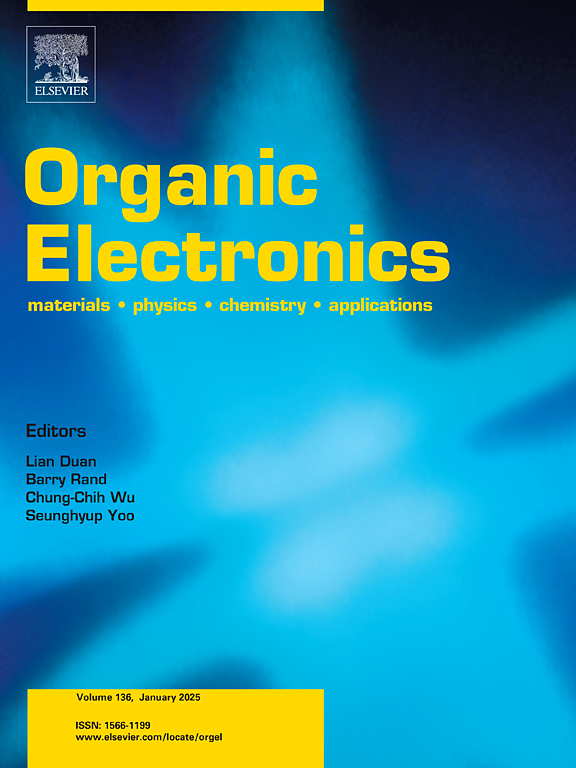Electrochromic supercapacitor electrodes based on viologen-derived cross-linked thin films
IF 2.6
4区 工程技术
Q3 MATERIALS SCIENCE, MULTIDISCIPLINARY
引用次数: 0
Abstract
Viologens are an important class of materials in organic electrochromic technology due to their n-type semiconductor properties and the high color intensity in their radical cation state. Due to their charged structures, viologens are generally ideal molecules for gel-based organic electrochromic devices, but with specific modifications, they can also be employed in thin-film-based electrochromic devices (ECDs). In this study, crosslinking reactions of viologen-based molecules (ALV-X) with various allyl group-containing counterions were conducted on ITO/Glass surfaces in the presence of a tetra-thiol-based crosslinker. The surface roughness of the resulting films varied from 4.64 nm to 8.46 nm depending on the counterion exchange. Electrochemical characterizations of the prepared viologen-based crosslinked electrodes indicated that the LUMO energy levels ranged between −4.267 eV and −4.297 eV. Viologen-based cross-linked thin films with transmittance changes close to 30 % in the visible region, 50 % in the UV region and 20 % in the NIR region with specific capacitances of 0.25 mF cm−2 have been found to be highly suitable materials, especially as cathodic layers in electrochromic/supercapacitor devices.

基于紫堇衍生交联薄膜的电致变色超级电容器电极
紫致化合物由于其n型半导体性质和在自由基阳离子态下的高显色强度而成为有机电致变色技术中重要的一类材料。由于其带电结构,viologens通常是凝胶基有机电致变色器件的理想分子,但通过特定的修饰,它们也可以用于薄膜基电致变色器件(ECDs)。在本研究中,在四巯基交联剂的存在下,在ITO/Glass表面上进行了基于violoogen的分子(ALV-X)与各种含烯丙基的反离子的交联反应。薄膜的表面粗糙度随离子交换的不同在4.64 ~ 8.46 nm之间变化。电化学表征表明,所制备的violoogen基交联电极的LUMO能级在−4.267 eV ~−4.297 eV之间。在可见光区透射率变化接近30%,紫外区透射率变化接近50%,近红外区透射率变化接近20%,比电容为0.25 mF cm−2的紫外光基交联薄膜被发现是非常合适的材料,特别是作为电致变色/超级电容器器件的阴极层。
本文章由计算机程序翻译,如有差异,请以英文原文为准。
求助全文
约1分钟内获得全文
求助全文
来源期刊

Organic Electronics
工程技术-材料科学:综合
CiteScore
6.60
自引率
6.20%
发文量
238
审稿时长
44 days
期刊介绍:
Organic Electronics is a journal whose primary interdisciplinary focus is on materials and phenomena related to organic devices such as light emitting diodes, thin film transistors, photovoltaic cells, sensors, memories, etc.
Papers suitable for publication in this journal cover such topics as photoconductive and electronic properties of organic materials, thin film structures and characterization in the context of organic devices, charge and exciton transport, organic electronic and optoelectronic devices.
 求助内容:
求助内容: 应助结果提醒方式:
应助结果提醒方式:


